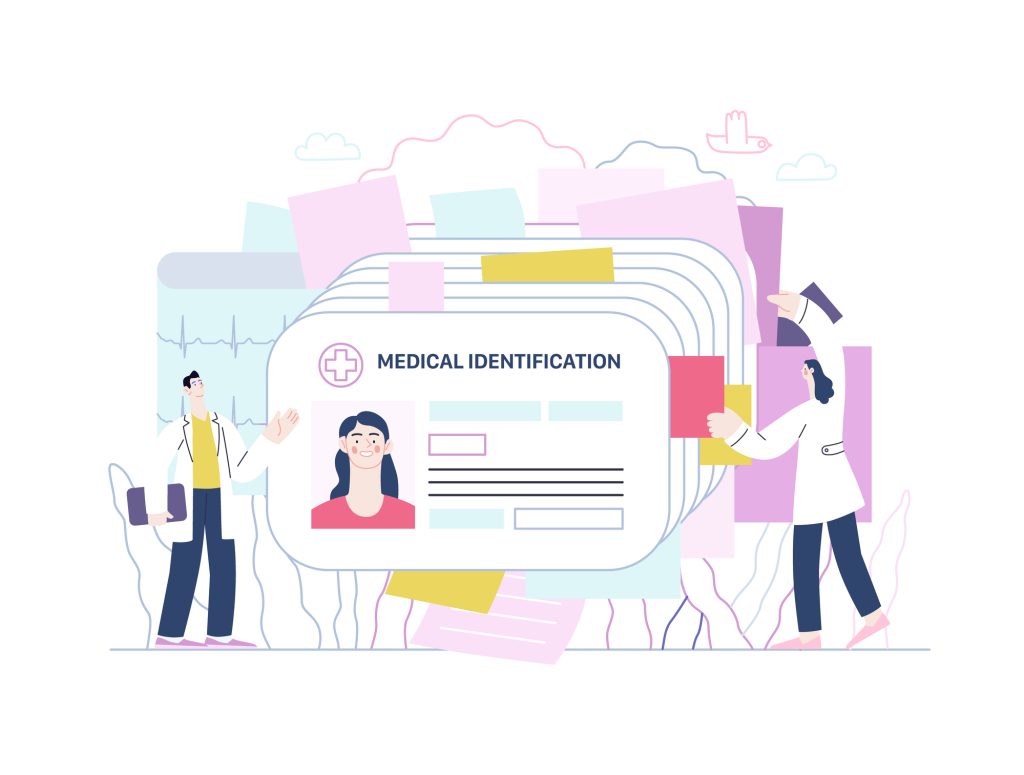
Written by Angela Rivera,
If you manage clinical teams, you already know how hard it is to not only attract the right talent but, perhaps more importantly, how hard it is to keep the great ones. This is a problem for two reasons, both of which you’re also likely familiar with, but it bears repeating: turnover is both expensive and bad for team morale.
So the question is, what, if anything, can be done to retain healthcare workers, especially in high-turnover clinical roles? The good news is, there is plenty you can do, and we’ll give you several recognition strategies for employee retention, but before you apply any, it’s crucial to understand why this happens in the first place.
Next, you need a solid, science-backed retention model that actually fits the realities of modern healthcare work. We give you both in this article: the theory, yes, because it helps to know the statistics and research, but also concrete retention tactics.
Why Retention in Healthcare Is Essential
Retention is obviously a big budget issue. Losing an employee, even one with moderate tenure, means the organization has to pay first for recruiting costs and then for onboarding time. But that’s only a part of the financial problem; the organization typically also needs to pay extra overtime for colleagues who have to step in until the new employee is ready. And that time until the employee is actually ready also means there is a drop in Another thing that matters but is often ignored is the drop in quality of service; over-worked employees cannot give their best, naturally.
According to industry analyses, a single RN resignation can cost an organization tens of thousands of dollars (up to $61,000 according to the linked report) in replacement and productivity loss. That is a lot, and only for one employee. When that keeps happening over and over again, the financial impact is often so big, it can devastate an organization. Clinical support roles do cost less per departure but since they churn far more frequently, their cumulative impact is enormous as well.
However, the extra costs, enormous as they can be (depending on how bad the turnover is_, are only a part of the problem when you look at it from a bird’s perspective. Staff who stay longer build not only better clinical intuition and the ability to remain calm under pressure, but they also build familiarity with patients. This combination allows them to become true experts in their fields, and both patients and their colleagues benefit from this.
Why Retention Is So Hard in High-Turnover Clinical Roles
Burnout is notoriously high in the healthcare sector, and while that is not news to anyone in the field, what may be is the sharp jump in recent years. Since COVID, the annual rates have climbed into the 30% range, even nearing 40% range.
Those are alarming numbers. While the dissatisfaction and overwhelmingness are sometimes the fault of organizations (poor management, poor relationships, etc.), there’s no denying that even well-run institutions struggle to retain staff. Why is that? There are several reasons, with the most common being:
1. High emotional strain without adequate recovery
Nursing assistants and behavioral-health technicians often have intense emotional interactions daily and while many can detach (as best as they can), it’s not possible to not absorb any of that emotional content and that takes a toll. Over time, many describe a sense of emotional depletion not only at work, but even when they leave. When that becomes routine, the exit often becomes inevitable.
2. Fragmented work and nonstop task switching
Going from one micro-task to another (vital signs, transport, stocking, discharges, etc.) is an everyday work for support roles. But this kind of work, while necessary and unavoidable to a degree, also takes a mental toll on a person. None of these tasks is overwhelming individually, but when combined, they create nonstop cognitive fragmentation, and as a result, exhaustion.
3. Little to no voice in decisions
Healthcare workers across all roles, including support, want at least some input in decisions that affect their daily work, be it workflow changes, assignments, or equipment choices. When changes arrive without explanation or, equally bad, without any opportunity for feedback, employees tend to feel invisible. This is a recipe for disengagement and is exactly the opposite of what you want if the goal is job embeddedness.
4. Schedules that leave little time for life outside work
Unpredictability is a part of the healthcare work package and your employees are aware of that. However, while some unpredictable shifts are unavoidable, frequent last-minute changes or too rigid scheduling structures are not. And they can push people out faster than pay alone. For staff who have children or are caring for aging family members, in particular, stability and flexibility often matter more than incremental wage increases.
5. Recognition is sporadic or absent
Most employees don’t expect to be constantly praised, but when they give it their best, everyone should be recognized and praised. It’s the key to job satisfaction. On the flip side of this, when effort goes unnoticed most of the time, job embeddedness weakens. The same thing tends to happen when recognition is too generic; there are effective ways to do this (more on this below).
Understanding the Problem Through Job Embeddedness and Retention Economics
With common reasons for high turnover out of the way, let’s look at the reasons why employees choose to stay at organizations. For this, we’ll use job embeddedness theory, which highlights three clusters:
- Fit: This element asks whether the role actually aligns with the employee’s identity and their vision of their future. In other words, do they see themselves here long-term (ideally, fulfilled).
- Links: This reflects relationships at work, including with coworkers, supervisors and patients. It includes routines, too. Who relies on the employee, and who do they have to rely on?
- Sacrifice: Finally, sacrifice refers to what an employee would lose by leaving. When schedules are too chaotic or alternatively, too rigid, or recognition is absent or inconsistent, or there is little to no opportunity for advancement, the perceived sacrifice stays low.
Note that for clinical support roles, “fit” is often underdeveloped not just because of the nature of work (demanding, low pay) but also because many see the role as a stepping stone. “Links” can vary quite dramatically depending on unit culture, and how managers communicate, and shifts play a big role, too. The “sacrifice” element is self-explanatory: it’s weak if schedules are always chaotic or relationships feel purely transactional, but high if there’s stability and flexibility and relationships feel more authentic.
Retention Tactics That Reflect Real Human Experience
Turnover among CNAs, MAs, home health aides, and behavioral health technicians differs from RN or physician turnover in several important ways, the most important ones being:
- Emotional labor tends to be higher but formal recognition low,
- Compensation and benefits are often modest,
- Staffing shortages are common, which creates a sense of constant urgency,
- There is limited career advancement.
How do you fix all of these (or at least most)? With retention strategies that reflect both evidence and the daily reality of clinical work.
1. Consistent, Authentic Recognition
Generic praise does very little. If the goal is to increase the “fit” and “link” elements, it needs to be more targeted and authentic. So, instead of a general “good job today,” it’s better to say something concrete and tied to their real effort to show you’re truly seen them.
Some teams respond well when recognition includes something small and tangible, especially when it’s paired with a personal note that explains why their contribution mattered. As long as the gift is ethical and simple, it can mean a lot and increase job satisfaction. If you don’t know what to give a remarkable employee, check out companies like Successories that curate thoughtful employee gifts for staff.
There are plenty of options but it’s best to get something you know (or at least have a hunch) the employee likes or could use.
2. Achievable micro-career pathways
Like any other role, support staff want attainable career progression, not a distant career ladder that requires two degrees they can’t pursue right now to climb. Short, stackable credentials tied to clear pay steps and defined competencies are ideal for this.
In short, you want to provide opportunities for small wins. These are what help build confidence, engagement, and loyalty. They also increase job embeddedness.
3. Scheduling that respects life outside work
Schedules should be fair and as predictable as possible, and designed protect sleep and family obligations. Even something simple like rotating holidays fairly or offering core hours, shows respect for employees. Flexible schedules (where possible, of course) tend to reduce turnover rates as they allow for more time for personal life.
Staff tend to be candid about this: “If I can plan my life, I’ll stay longer.” Maybe not to leaders directly, but this is absolutely what they think and often talk about to each other.
4. Emotional support embedded into culture
Occasional perks help, but burnout cannot be solved by them alone. To truly ease:
- Staff should routinely get debrief time after critical incidents,
- Leaders need to openly talk about their own stress and coping mechanisms,
- Mental health resources should be easy to access without stigma,
- And units should normalize checking in on each other.
5. Relational management and high-visibility leadership
Regardless of profession, employees tend to feel more valued when they feel their superiors, especially managers, know them; it’s simple human psychology. This goes even for companies that pay higher-than-average salaries, but is even more important for the healthcare sector, where pay tends to be lower and expectations higher.
But knowing your staff should go beyond the superficial way in order to count for retention. No, you don’t need to become best friends with everyone, but your relationship should show that you see their strengths and pressures. And, equally important, that you appreciate them for it. Again, words of encouragement, some work flexibility (so they have more time for their personal life where possible) and even modest gifts from time to time can go a long way here.
6. Peer recognition systems that give everyone a voice
Peer-nominated micro-awards can also make the workplace more positive and therefore increase job satisfaction. These should highlight contributions leaders may never witness.
This is particularly important for night-shift teams who usually receive the least direct visibility.
Measuring Retention Impact
When you apply some of these suggestions, you want to take time to actually measure their impact. Organizations are different and so are units, so what works great for one may prove to be inefficient for another.
So, after some time (ideally several months up to a year but not sooner than that), use both quantitative and qualitative indicators to measure things like:
- Turnover rates,
- Orientation completion rates,
- Overtime usage,
- Patient experience scores,
- Pulse survey items on trust, recognition, and intent to stay,
- And sentiment trends in open-text survey responses.
The qualitative feedback often contains your best insights. When you start getting feedback like “feeling appreciated,” “feeling safe and supported,” or “experiencing better teamwork,” retention improvements usually follow.
References
Becker’s Hospital Review. (2025, May 28). The cost of nurse turnover: 5 things ASCs need to know. Becker’s ASC.
Mohr, D. C., Elnahal, S., Marks, M. L., Derickson, R., & Osatuke, K. (2025). Burnout trends among US health care workers. JAMA Network Open, 8(4), e255954.
NSI Nursing Solutions. (2025). 2025 NSI National Health Care Retention & RN Staffing Report – Quick Reference Guide. NSI.
Psychology Today. (2024, June 6). Why appreciation from management matters.
TrustedHealth Works. (2023). Understanding and addressing nurse turnover.
Author Bio
Angela Rivera is a health writer who specializes in addiction care, telehealth, and behavioral science. With a background in patient education and evidence based communication, they focus on making complex clinical topics clear and approachable. Their work highlights practical strategies people can use to navigate recovery with confidence and support.
Please also review AIHCP’s Health Care Management Certification program and see if it meets your academic and professional goals. These programs are online and independent study and open to qualified professionals seeking a four year certification

 Written by Jeremy Carter.
Written by Jeremy Carter.

 Written by Lucy,
Written by Lucy, Written by Muhammad Numan
Written by Muhammad Numan Written by Catherine Alvarez.
Written by Catherine Alvarez.
 By Daria Lalaiants.
By Daria Lalaiants. Written by Jeremy Carter
Written by Jeremy Carter